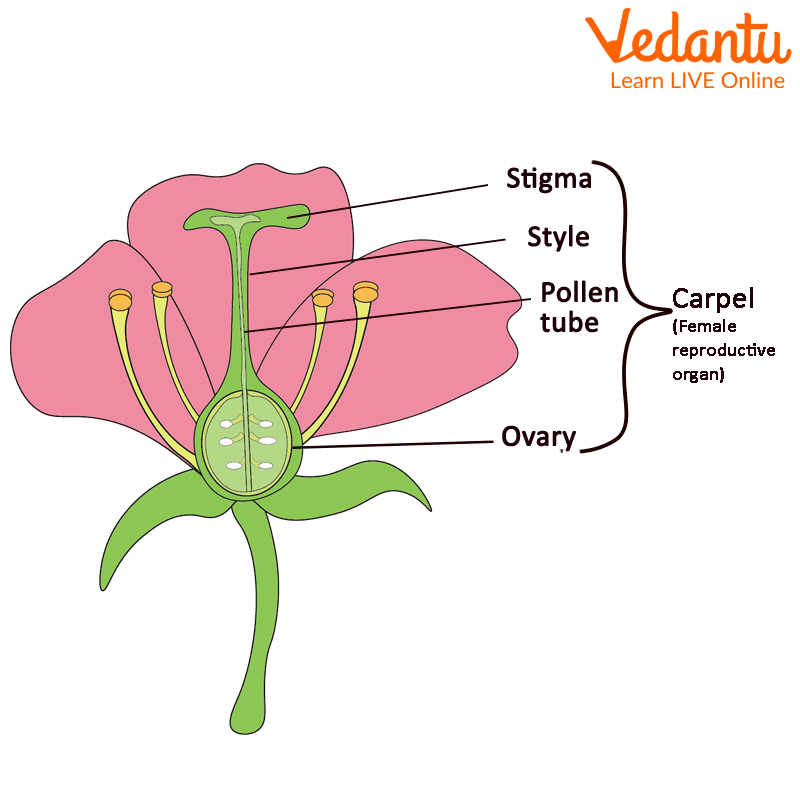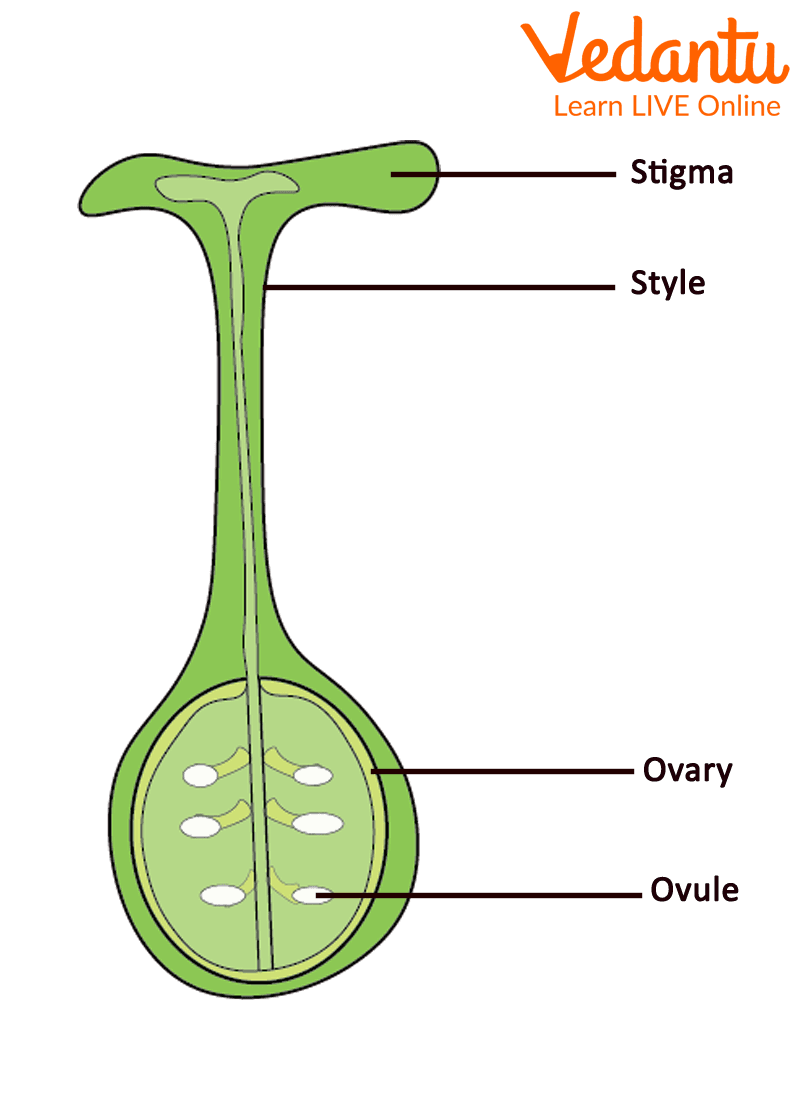




What is the Middle Part of a Flower Called?
The pistil is the middle part of the flower. It is also known as the female reproductive part. The centrally located pistil typically consists of a swollen base called the ovary, which contains the potential seeds, or ovules; a stalk called the style that emerges from the ovary; and a stigma with various shapes and is frequently sticky. The female reproductive organ is called the gynoecium collectively.

Flower
Parts of Pistil
Stigma: The stigma is a component of the pistil, a flower's female reproductive organ. The stigma is above fashion. To capture pollen, the stigma may be hairy, sticky, or both. When the pollen touches the stigma, a pollen tube develops that extends through the style and into the pistil's ovary. The stigma's surface may be damp or dry.
Style: The centre of a female flower is called the style. It connects the stigma with the ovary and has a stalk-like appearance. Style serves the same function in the female organ of a flower as filament does in the male organ. It aids in the transfer of pollens from the stigma to the ovary.
Ovary: Ovules are present in the ovary at the base of the pistil. When an ovary receives pollen, it combines it with ovules and grows the resulting mixture into seeds or fruits. As a result, after fertilisation, the fruits and seeds are formed. When these seeds or the seeds inside of fruits germinate in the soil, new plants are created.

Pistil
How Does a Pistil Work?
The main functions or purposes of the pistil are pollination and fertilisation.
Pollination is a process through which a male flower's pollen grains travel and reach the stigma of another female flower. There are different pollination agents like wind or water or animals like insects. For successful fertilisation, the flower has to recognise the pollen grain belonging to the same species and only allow the growth of that pollen grain. The pistil carries out this important task through a chemical recognition between the pistil and the pollen grain. Thus, the pistil only allows a compatible pollen grain to germinate, creating a pollen tube leading to fertilisation.
The pollen tube grows downwards through the pistil and reaches the ovary, where it deposits the male gametes, which eventually enter the ovary and then fertilisation occurs, resulting in the formation of a seed.
Functions of Pistil
The following are the functions of the pistil:
It is the female reproductive part of the flower, and therefore it is involved in the fertilisation process.
The stigma of the pistil is responsible for receiving the pollen.
The style of the pistil is responsible for safely transporting the compatible pollen to the ovule.
Pistil protects the ovule present inside it.
Solved Questions
1. Can a flower have more than one pistil?
Ans: Yes, a flower can have more than one pistil for example mustard, lily etc.
2. Write a few functions of a pistil.
Ans: The functions of a pistil are:
The pistil's stigma is where the pollen is deposited.
The compatible pollen is transported securely to the ovule by the pistil's style.
The ovule that is inside the pistil is protected.
3. What are the parts of a pistil?
Ans: Pistil has three parts:
Stigma
Style
Ovary
Learning by Doing
Fill in the blanks:
1. Pistil comprises of _______,_________and________.
2.Pistil is the __________reproductive part of the flower.
Summary
The centre of the flower contains the pistil, the female reproductive organ. The ovary, which contains seeds or ovules, the swollen base, the stalk or style that emerges from the ovary, the pollen-receptive tip, and the stigma, which can take a variety of shapes and is frequently sticky, make up the majority of the structure. The number of pistils in a flower typically varies depending on the flower's species. Each pistil is made up of one to many leaf-like structures, and their primary job is to protect the ovules.
FAQs on Pistil: Middle Part of the Flower
1. What is the middle part of a flower called?
The middle, central part of a flower is typically the pistil, which is the female reproductive organ. It is surrounded by the stamens, which are the male parts, and then the petals.
2. What are the main parts of the pistil?
The pistil is made up of three distinct parts that work together. These are:
- Stigma: The very top part, which is often sticky to catch pollen grains.
- Style: The stalk-like tube that connects the stigma down to the ovary.
- Ovary: The swollen base of the pistil that contains the ovules, or potential seeds.
3. Is the pistil the male or female part of the flower?
The pistil is the female part of the flower. Its main job is to receive pollen and develop seeds. The male part of the flower, which produces pollen, is called the stamen.
4. Why is the pistil so important for a plant?
The pistil is essential for a plant's survival because it is where fertilisation occurs. Without the pistil, the plant cannot produce seeds. Without seeds, the plant cannot create new offspring, meaning the species cannot continue to grow and spread.
5. How does the pistil actually help a flower make seeds?
The process starts when a pollen grain lands on the sticky stigma. The pollen then travels down the style until it reaches the ovary. Inside the ovary, it joins with an ovule. This joining process, called fertilisation, transforms the ovule into a seed.
6. What is the difference between a pistil and a stamen?
The key difference is their function in reproduction. The pistil is the female part that contains the ovary and receives pollen. The stamen is the male part that produces and releases pollen. In a typical flower, you can see the pistil in the very centre, with several stamens surrounding it.
7. What would happen if a flower's pistil was missing or damaged?
If a flower's pistil were damaged or missing, it could not reproduce. Even if pollen from another flower landed on it, there would be no way for the pollen to reach the ovules. As a result, the flower would be unable to produce any seeds or develop into a fruit.









